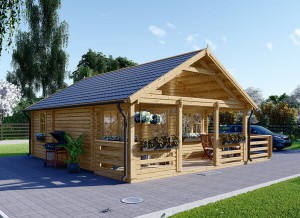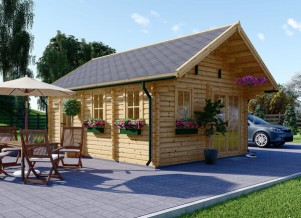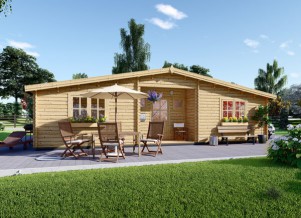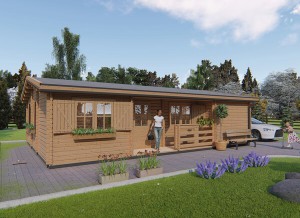Do you have a log cabin far and away from civilization? Maybe you only get up to it once a year. Maybe it is strictly a hunting cabin, or only used a once every blue moon. No matter what your situation, owning an isolated log cabin can present its own set of issues. The lack of use makes it necessary to check up on a building you use infrequently. From bugs to plants to unwanted guests, there are a few things you should check in your log cabin during the Spring and Summer.
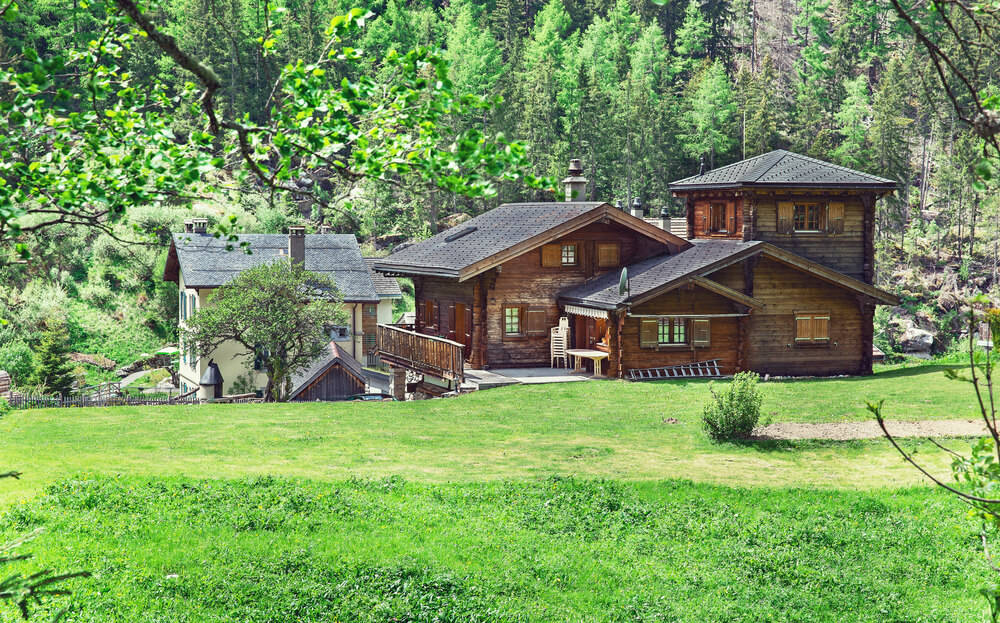
Now that the warm weather is upon us, we can do a lot of things we couldn’t do over the winter. Things like picnics, bbqs, and lawn parties. However, Spring and Summer also bring on added responsibilities. Like taking a maintenance trip to your isolated log cabin. If you haven’t been in a while, you really should get out there. There are some owners that go 2 to 3 years, but we recommend checking out your wooden building at least once a year. That time of the year is when the warm weather hits. Many log cabins located far from civilization are in isolated areas. Places like the forest and the mountains. That means there is a potential for greater weather damage, including damage from trees. After the ground has thawed and the Easter bunny has hopped along, it is time to tackle the following list.
Warm Weather Log Cabin Checklist
#1. Roof
Starting from the top down, the first thing to examine is the roof. A healthy roof is essential to a healthy log cabin. The first thing you may notice are branches and other debris laying on the roof. If you are in an area with a lot of trees around, that will be pretty normal. Go ahead and throw down all of the clutter and timber you find laying around. We will clean this up later. Now that everything is clean, take a good hard look. Make sure there aren’t any cracks or other damage to the roof. If there is, it becomes a priority.
#2. Gutters
While you are up high, the next thing to tackle is the gutters. Gutters work great to keep water from damaging your log cabin. However, over the fall and winter leaves and debris get stuck inside. That redirects water to areas where you don’t necessarily want it. Pooling water can ruin the bottom of your home. At best making it a swamp, and at worse rotting out the bottom logs. This invites insects and other small animals into your log cabin. To avoid all of this, simply flush out your gutters in the Spring or the Summer.
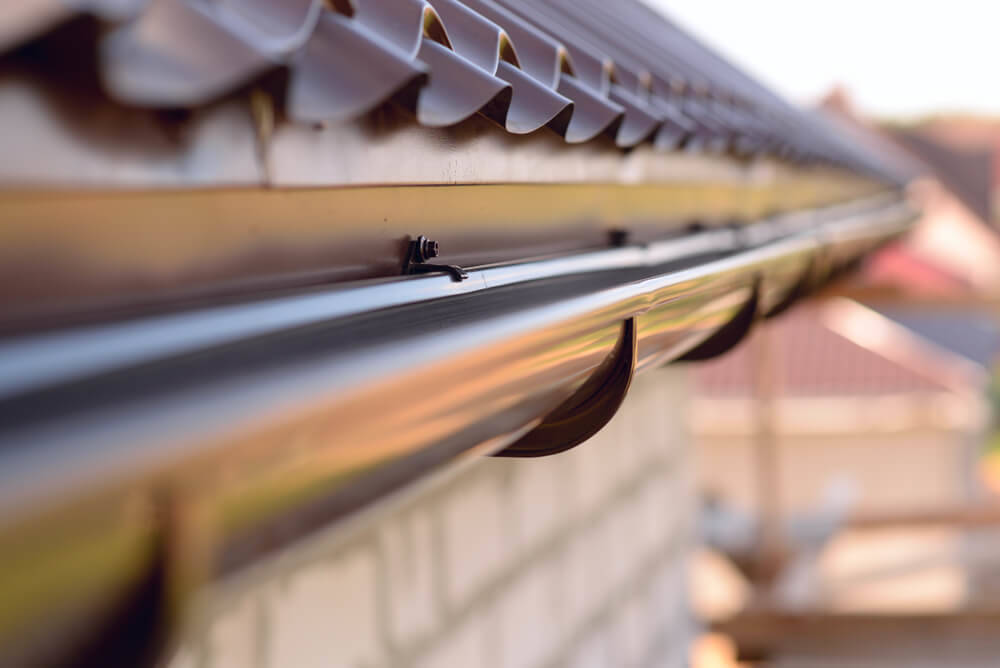
#3. Walls
The next category on your isolated log cabin checklist is walls. Inspecting the walls entails carefully looking at each log. You will be looking for signs of water, insect, and weather damage. The walls that are exposed to the most extreme weather should be given an extra look. The same goes for the walls that receive the worst weather. Usually this means the south side, but each home location is different. This step can take awhile, depending on how large your structure is. If you find anything, it is important to seal the hole or crack right away with special log cabin caulk.
#4. Plants
Now is the time to clean up all of the roof debris you threw down earlier. It is also time to clear away other forms of nature from around the log cabin. It’s true that the flora of the forest floor looks great around your home. No one is denying that. However, the lush natural plants touching your logs do your structure does it no good! Since wood and moisture don’t get along well, the constant moisture of plant leaves can cause rot. If you have been good with reapplying stains, you don’t have as much to worry about. But, it is better to be safe than sorry. You will want to remove all living plants that are touching or close to touching your log cabin. That goes double if you are doing this in the Spring. By the end of summer there is no telling how much the leftover flora will grow.
#5. Trees
One part of keeping not only your roof and your log cabin healthy is checking the health of the surrounding trees. If you are in an especially woodsy area, this is referred to as fire mitigation. When your trees begin to dye, they pose a higher risk of burning. Not only burning, but falling and crushing your isolated log cabin.
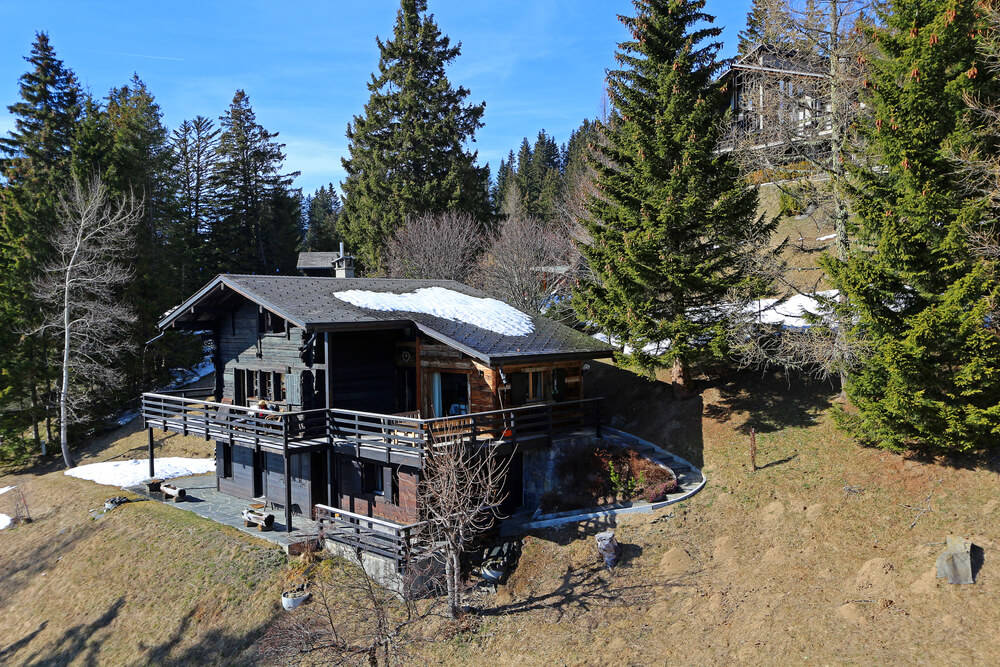
# 6. Insects
Another part of keeping the trees around your structure safe is checking for insects. There are quite a few wood-boring bugs. If termites weren’t enough, bees, ants, and beetles all have a wood-boring species. Besides the fact that these insects will eventually kill your trees, they will eventually start eating your log cabin. If you take proper precautions, you won’t have to worry. Luckily, routine maintenance and keeping an eye on your trees is all it takes. If you already have signs of an insect infestation, call the local bug catcher and look into natural methods.
#7. Lost Souls
If you live in a truly isolated part of a forest or a mountain range, this step is for you. Suppose someone lost their way hiking or backpacking. Coming upon your log cabin could be the only thing keeping them from dehydration, starvation, hypothermia, etc. Wouldn’t it be nice if they found non-perishable food items and some bottled water? Nothing fancy, but some canned items as well as a few dehydrated meals will put the life back into any lost soul. In fact, many isolated log cabin owners even leave their doors unlocked for the very purpose of helping anyone that loses their way. This is completely optional, but it can mean the difference between life and death.

